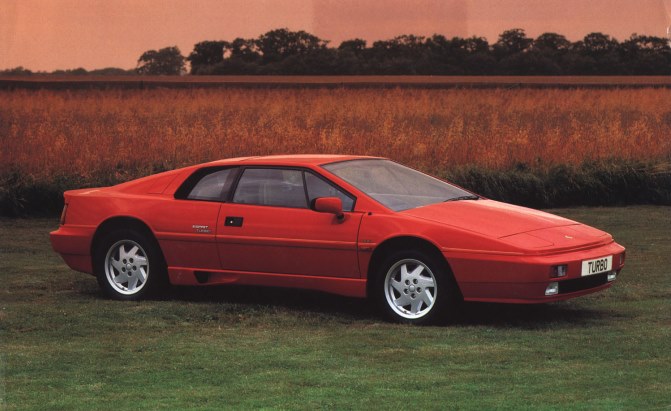
The model year of your Lincoln Continental is crucial when buying it. The Continental's previous model was discontinued by Lincoln in 1993. However it was brought back for the 1980s. The new Lincoln Continental was created to compete with the Cadillac Seville, and the Imperial. This model was distinguished by its styling, which set it apart from the Ford Granada (Mercury Cougar) and the Imperial. Its platform was similar to the Ford Fox Mercury Cougar and Granada. The new Continental Mark VII also shared the Continental's wheelbase. This model was introduced during the 1984 model year.
Model year 1993
Four recalls have been issued to the Lincoln Continental in the 29-year history of the model. There were 4 recalls for the 1993 model. Here is a look at each of those vehicles. There are many unique features in the 1993 Lincoln Continental. A new center console, with floor shifter, has a center armrest, and cup holder are just a few of the changes. The interior is extremely spacious, as well as the large trunk.
1994 Model Year
The fourth-generation Lincoln Continental came in three body options: the Sedan, Convertible and the Wagon. The first four-door convertible after World War II was this model. It featured a power-operated retractable top. A retractable "breezeway", rear window was also included in the Continental. It was first introduced in the Mercury Turnpike Cruiser, in 1957. The second generation Continental used the same styling principles as the first, but with frameless glass doors.
1995 Model Year
The base price for 1995 Lincoln Continental was $40.750. It increased to $74,500 after production ended in 2002. The Continental received some refinements as well, including a more advanced suspension system, adjustable steering effort and seat-mounted side airbags. The sedan also received a split-bench front bench and a power sunroof. The 1995 model, although no longer in production, is still available for sale.

Model year 1996
Lincoln Continental's tenth century introduced a new frontend design theme. The standard equipment consisted of a door lock with an electricly latching handle. A button located at the door pull handle allowed you to unlatch your door. A beltline window trim was used to integrate exterior door pulls, which is a nod to the third-generation Ford Thunderbird. These changes were accompanied by an all-new, more comfortable seating position.
Model year 1997
Lincoln's 1997 Lincoln Continental was its last model. It was a luxurious car that ranked high in the luxury category. It was sold by its second owner after only 13,000 miles. This luxury car was only 16 years old and has needed minimal repairs to keep it in great condition. The transmission, levelers and engine were replaced at 50,000 & 93,000 miles, respectively. The interior of this car was very comfortable and elegant. The suspension was also adjustable for comfort, control and stability.
Model year 1998
The interior design of the 1998 Lincoln Continental has been improved over the model before it. New interior trim includes bird's eye maple on the dashboard and textured suede on the dashboard. Overall, the cabin feels roomier than the previous model, with a slightly smaller back seat. The interior space is smaller than that of the Seville. Despite its new exterior design, the 1998 Lincoln Continental offers excellent value for money.
Model year 1999
The Lincoln Continental model year 1999 is only 5ins wider than its predecessor, the Chrysler Town Car. It's 7ins shorter. It also has a significantly better engine. The Continental's 4.6L V-8 is now DOHC, whereas the Town Car's is SOC, or single overhead cams. As a result, its horsepower has increased from 260 to 275 horsepower at 5,750 rpm.
Model year 2000
The Lincoln Continental's V8 engine has seen one of the greatest changes since its predecessor. This engine is more powerful than the previous generation, it's faster and more agile, and is packed with electronic gadgetry. It can reach 16.3 mpg and match the acceleration of the Cadillac Seville SLS. The Lincoln Continental was also equipped to the latest electronic suspension. However, it is not as impressive as it could be. Normal mode is the most efficient.

Model year 2002
The Lincoln Continental model year 2002 is largely the same. There is a new exterior colour and a Vehicle Communication System (VCS), that includes a portable digital to-analog telephone. Other features of the new model year include a power moonroof and a six-disc changer. The cabin is spacious and can hold up to six people. The Lincoln Continental's warranty remains at four years/50,000 miles.
Model year 2003
The Lincoln Continental was last model year 2003 Continental. But its success is not solely due to its design. The 1961 Continental was the inspiration for its interior. The dashboard featured retro-looking gauges as well as a host of hidden infotainment functions. It was also the most luxurious car in its class. The 2003 model had the best interior of any Lincoln.
FAQ
What length of an automotive course is it?
A course in automotive lasts three years.
The first year is spent on theory, learning all about cars. The second year is dedicated to practical training, where you will learn how to fix cars, drive them, and do other jobs around the car. The last year of your training is spent on practical training, where you learn how to fix real-world problems.
What is the best way to learn about car mechanics
You don't need to know anything about cars to work as an auto mechanic. It's enough to know how to fix things. It's why many people begin to fix things by fitting brake pads or changing tires.
You'll need the ability to read and understand diagrams and to follow simple rules of good practise. Also, you will need to know how to tell if parts require replacing or repair.
It is important that you have proper training and guidance before you attempt to repair vehicles. This is especially true if you deal with expensive components such as engines or transmissions.
Although you won't be required to know much about cars you should have a solid understanding of the fundamentals and principles of mechanical engineering. This is how you understand the mechanisms behind engines and brakes.
It is important to realize that you must be ready for all types of situations. For instance, you might find yourself in charge of a vehicle that has been in a serious accident. Also, you'll need to be familiar with dealing with accidents or breakdowns.
You should also be open to learning quickly. You will need to be able not only to diagnose problems but also to perform simple maintenance tasks like tightening bolts and nuts.
What is the difference?
They are both similar, but not identical. A mechanic repairs cars while an automotive technician does maintenance on them.
A mechanic should be able to do simple tasks quickly and have good manual dexterity. They should be able to accurately diagnose problems and repair them efficiently.
A technician in automotive is more technical than a mechanic. They must be able to read blueprints and use tools such as drills and wrenches.
They must also be able to carry out complex procedures safely. They should also be familiarized with the different types of engines as well as electrical systems.
They must also be able comprehend how the various parts interrelate with one another.
This means that mechanics usually make less money than automotive technicians. But there are many opportunities for both jobs.
Statistics
- 52% of Mechanics in the United States think their salaries are enough for the cost of living in their area. (indeed.com)
- There were 749,900 jobs available for automotive service technicians and mechanics in 2016, which is expected to grow by six percent through 2026. (jobhero.com)
- According to the BLS, total auto technician employment is expected to exceed 705,000 by 2030. (uti.edu)
External Links
How To
How to guard yourself against auto mechanic scams
Consumers are often victims of auto mechanic scamming. An average car repair bill costs $1,500 annually. This means that there is plenty of people willing to take advantage. However, if you know what to look for, you can avoid becoming a victim. These are some tips that will help you recognize a scammer before he or she takes your money.
-
Never pay upfront. You should never pay upfront if someone asks. When work is complete, always request payment. If you have any doubts about whether something is legit, contact the Better Business Bureau (BBB), at 1-888-322-8138. They can provide guidance and assistance.
-
Ask for references. Ask for references to help you make sure that you're dealing only with reputable service providers. You can also check out online reviews. You should ensure that the business you do business with has a good reputation.
-
Do background checks. Background checks are essential for hiring anyone. You can check the BBB website for complaints about the business. Also, ensure that the vehicle's license number belongs to the person who owns the business.
-
Don't hesitate to walk away. Sometimes, even when a company appears legit they try to scam you into paying too much. If you feel you have been taken advantage of, don't hesitate and leave. There are plenty more businesses to choose from.
-
Beware of free services. There are many companies that offer free inspections and estimates. Many of these companies charge exorbitant fees in the future. Before you agree to anything, make sure you ask about any additional fees.
-
Avoid being pressured. You shouldn't be pressured by companies that offer great deals. This is because they think they can make you pay less than you deserve. If you find yourself in a situation where you are being pressured to buy something, it's likely a scam.
-
Make sure you only purchase high quality products. When looking for a repair shop, you want to ensure that they use high-quality parts. If you need to replace brake pads, you don't want to go to a shop that uses cheap pads. Instead, shop for brakes.
-
Get multiple quotes. It's important to compare prices between different shops. Comparing prices between shops will give you a better chance to find a fair price.
-
Keep track of everything. It's important to keep track of all the details surrounding your repair. This includes invoices, receipts, and warranties. It is also a good idea to keep track of any addresses or phone numbers that you receive.
-
Stay informed